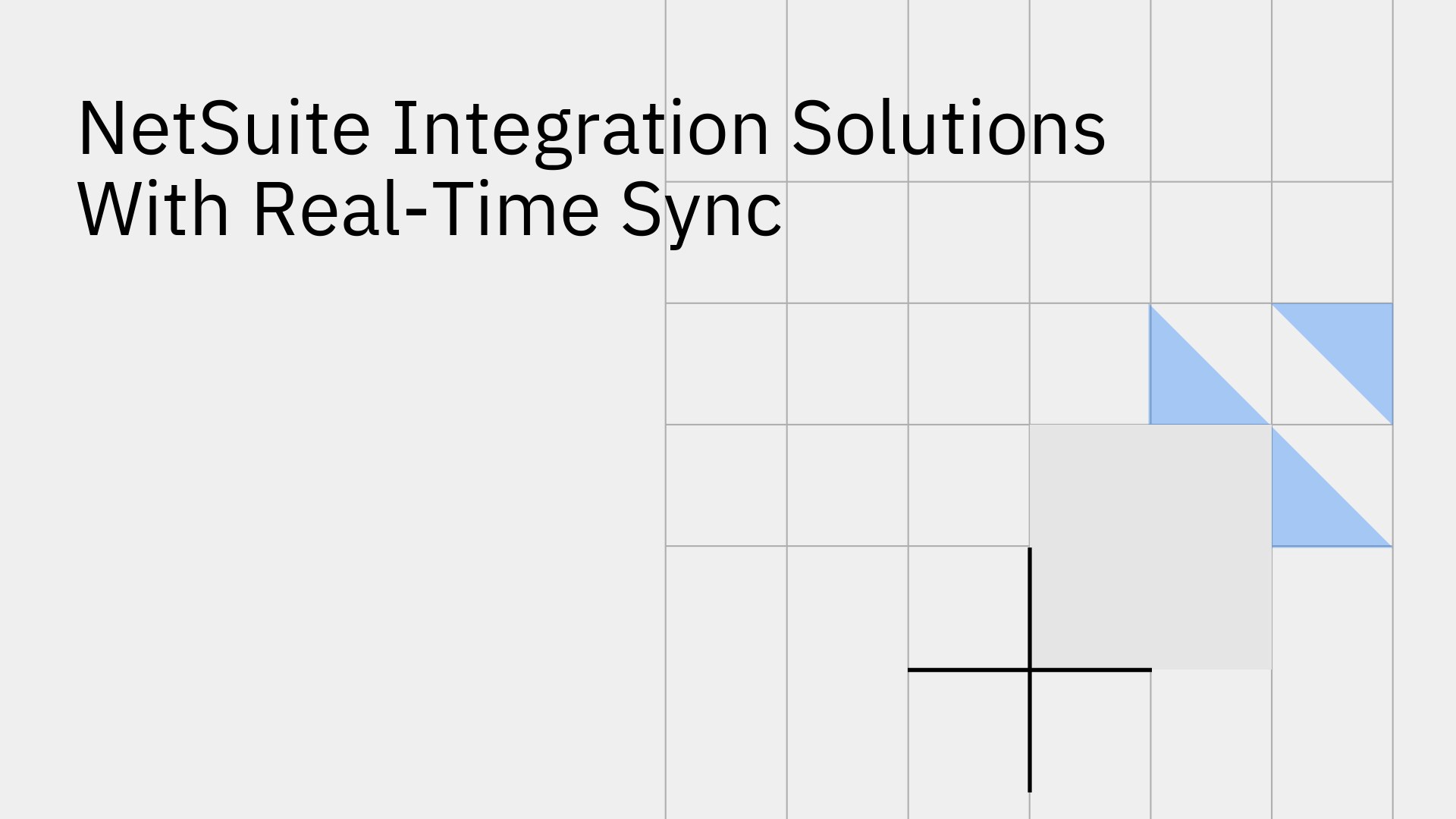
NetSuite is a powerful cloud ERP that serves as the operational core for many businesses. As companies scale, they adopt specialized applications for CRM, e-commerce, and other functions.
This growth, however, often creates data silos, trapping critical information within separate systems and preventing a unified view of the business.
NetSuite integration solves this by connecting the ERP with other applications to enable seamless data flow. To maximize efficiency and data accuracy, this connection must be instantaneous.
This article explores Netsuite integration solutions that deliver true real-time synchronization.
Disconnected systems force teams into manual, error-prone data entry, leading to outdated information and delayed decisions. This operational drag creates tangible problems, such as promising an out-of-stock product or sending an invoice reminder for a paid bill.
Real-time sync eliminates these issues by instantly updating data across all connected systems the moment a change occurs. This is a significant upgrade from batch processing, which creates data discrepancies by only updating periodically. The benefits of real-time systems integration are transformative [1]:
While one-way data pushes are common, true operational alignment requires bi-directional flows. A comprehensive enterprise integration guide for NetSuite explains how two-way sync ensures changes in any system are reflected across the entire tech stack.
NetSuite can be integrated with virtually any business application to break down data silos and streamline operations. The following are some of the most impactful use cases.
Connecting NetSuite with a CRM like Salesforce aligns sales and finance teams by bridging the gap between sales activities and financial outcomes. This integration syncs customer accounts, sales orders, invoices, and payment statuses to create a 360-degree view of the customer lifecycle. Understanding the specific challenges and solutions is key, which is why Stacksync is the ultimate solution for NetSuite-Salesforce integration.
For e-commerce businesses, a real-time connection between the online storefront and the back-end ERP is essential for a smooth customer experience and efficient operations.
Key synchronized data flows include:
Implementing comprehensive two-way sync solutions for Shopify and NetSuite is critical for managing these complex data flows effortlessly.
Businesses often need to sync NetSuite with external databases to power custom analytics, populate a data warehouse, or connect with proprietary applications. Traditional methods often struggle with NetSuite's API rate limits and throttling, which can hinder real-time performance. This makes it crucial to explore modern synchronization methods for NetSuite database integration designed to overcome these limitations.
Not all integration approaches deliver the same results. Traditional methods often fall short, introducing new complexities and failing to provide the real-time performance that modern businesses demand [4].
Stacksync is engineered to overcome the challenges of traditional integration. Instead of relying on brittle code or inefficient polling, our platform offers a modern, reliable, and effortless path to real-time NetSuite synchronization.
This makes Stacksync one of the most effective Netsuite integration solutions available:
With Stacksync, you can implement a robust Netsuite two-way sync integration and workflow automation in minutes, not months.
Follow this actionable guide to implement a successful NetSuite integration strategy.
NetSuite integration is no longer a luxury, it is a necessity for achieving operational excellence. Real-time synchronization is the gold standard that empowers your teams with accurate, up-to-the-minute data, automates tedious processes, and delivers a superior customer experience.
Modern, two-way sync solutions like Stacksync overcome the limitations of traditional methods by providing a reliable, scalable, and intuitive platform to unify your entire technology stack. By adopting a real-time integration strategy for NetSuite, you can transform your operations and build a resilient foundation for future growth.
Learn more by exploring our Salesforce NetSuite Integration: Real-Time Sync Guide 2025 and discover how Stacksync can unlock the full potential of your business data.